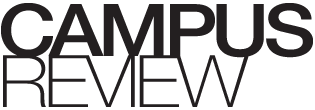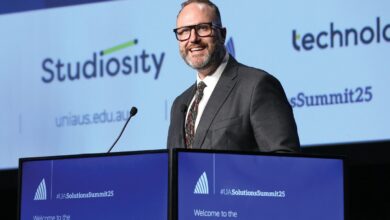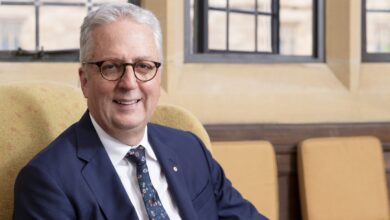Industry & ResearchNews
Senator refutes Ernst & Young report
A “doom and gloom” analysis on the future of Australia’s universities has been downplayed by some leaders in the sector, who say many changes are already underway.
Please login below to view content or subscribe now.






As with health, and social services, and roads and utilities – the big finance companies can smell the scent of blood. Universities have been softened up by the government over the last decade and now there are signs of a death thrash.
Expect lots more reports on what the private sector can do for you. And make sure you have a) an exit route or b) a good pension. Alternatively universities can begin to fight back. But for that they need a new language about themselves. Robert Manne’s recent article in The Conversation was useful – but it separated programs for the ‘life of the mind’ from the rest of vocational-managerial university sector. This is like taking arts out of the market place and leaving popular culture to fend for itself. We need to assert the role of the independent, public, equitable university in the face of the massive privatisation of knowledge – which (as usual) comes under the guise of increased access and choice. Privatisation not of data, or of books and courses but experience of a community of teachers and students, learning and truth that universities tried to provide.
As with the privatised utilities in countries like the UK, what begins as breaking up monopolies ends up by bigger monopolies, more expensive and less accessible. Universities need to assert themselves and their role. Why would we leave the future of higher education to governments who were complicit in the GFC and can’t lift a finger to stop global warming. The clock is ticking…..
It is interesting how little data is presented in the report. Indeed, it is mainly extrapolations of individual trend items without anything more substantive than that (anyone working in the area would say “ok, basically these are trends”). The report also includes many things that are clearly true but mis-represented (e.g., the data on “faculty support staff”. I hate to tell them but few “faculty” actually have “support staff”. Who have these staff are the administrators who invariably need such “assistance” to meet the never ending KPIs that arise from government policy). It is interesting, however, that all the press and govt reaction comes from E&Y doing a “report” when many of us have been discussing these and more substantive issues for 20 years.
In may ways what we see in this report is pretty typical of external consulting reports: (a) a consulting operation that has a “vertical” in that area that needs to generate business, (b) a gloom and doom scenario that requires change in the business models of potential clients (such a scenario is outlined based on its face “reasonableness” so that it does not contradict simply naive facts), and (c) a list of the expert team one would need to contact to acquire the expertise of that team. We saw this w/r to the tech boom, the rise of emerging markets, the financial crisis, social responsibility, and so on. We are all doomed but if we get the right advice we can be saved. Hurry now before it is too late.
The reality is that ALL business models are unsustainable over some period given the evolution of market demand, factors of supply, technologies and so on. The real question is whether the expertise to deal with that resides “inside” the institutional structures or “outside” those structures. I personally doubt whether any group of consultants has the level of depth of knowledge or understanding of universities to make this happen. The real change will come from within the system (as we are seeing with MOOCs).
I agree with Professor Timothy Devinney. This is another bombastic advertising brochure for Ernst & Young’s higher education consultancy. It follows Ernst & Young’s ‘Higher education and the power of choice’ of July 2011.
This latest from Ernst & Young is as exaggerated and misleading as its 2011 paper which made 5 claims which have turned out to be as wrong as they seemed at the time.